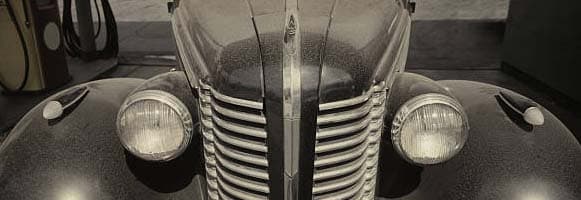The world of vintage cars beckons to those with an affinity for history and design. Each classic model narrates stories of past decades, painting vivid pictures of old towns, drive-in theaters, and summer road trips. Beyond their aesthetic appeal, they embody the technological and cultural ethos of their time, making them much more than mere vehicles. Photographers often find themselves not only capturing the car but also the zeitgeist of its era. Their intricate designs, the chromatic play of their paint under sunlight, and the curves that hint at artisanal craftsmanship, combined with the backdrop of past times, provide endless inspirations. Amidst all the photographic opportunities, it's also a challenge. For instance, imagine photographing a vintage jeep in its natural habitat – the rugged outdoors – it brings to mind the importance of equipment beyond the camera, such as the best jeep winch, ensuring safety and optimum positioning for that perfect shot.
Modern Marvels: The Emergence of Electric Cars

In stark contrast to the charm of yesteryears, electric cars offer a glimpse into a future that once existed only in science fiction. Representing more than just transportation, they echo humanity's advancements and aspirations. Clean, silent, and intelligent, electric cars are the heralds of a new era in automobile design and engineering. With their aerodynamic shapes, luminous interfaces, and often avant-garde designs, they're a testament to how far we've come. However, capturing them requires a different lens (figuratively and literally). The emphasis shifts from nostalgic sepia tones to crisp, futuristic aesthetics, and from classic settings to urban backdrops and state-of-the-art charging stations.
Photographic Techniques Tailored to Specific Eras
The art of photography evolves in tandem with its subjects. Vintage cars, with their storied past, often come alive with softer lighting techniques that amplify their antiquity. One might lean toward warmer tones, diffused lighting, or even period-specific backgrounds to enhance authenticity. On the other hand, the cutting-edge design of modern electric vehicles might be accentuated with high-definition clarity, stark contrasts, and a cooler color palette. Whether it's using a particular filter to bring out the burnished glow of a classic or employing drones for dynamic aerial shots of contemporary cars, techniques vary as widely as the vehicles themselves.
Addressing Photographic Challenges
Cars, regardless of when they rolled off the assembly line, are a complex subject to capture. The challenges they present are multifaceted. Vintage vehicles, for instance, might bear marks of wear and tear, or remnants of an era long gone - rust patches, faded paints, or leather seats weathered by time. Such details, while adding character, require a careful approach to ensure they don't dominate the scene. Modern electric cars, with their glossy finishes and sleek lines, can throw off reflections that could either make or break a photograph. Their minimalist design, while visually pleasing, calls for precision. One has to master the art of using natural light, or perhaps even create controlled lighting conditions, to avoid overexposing their polished surfaces. Moreover, the interplay of city lights on the shiny surface of an electric car can either become a mesmerizing image or a chaotic jumble if not handled with expertise.
The Emotional Aspect of Automotive Photography
Photography is as much about capturing light and shadows as it is about eliciting emotions. A photo that fails to stir feelings in its beholder is merely a visual record, not art. When photographing cars, the task becomes doubly challenging. How does one infuse life into an inanimate object? The key lies in tapping into the memories and aspirations they represent. A vintage car might evoke the carefree joy of a summer road trip from decades ago or the thrill of a first drive. In contrast, an electric car could symbolize hope for a greener future or the marvel of human innovation. By focusing on these narratives, photographers can turn metal and rubber into stories of passion, nostalgia, and dreams.
Tools and Equipment for the Perfect Shot
Photography, at its heart, is a synergy of vision and technique. While the eye visualizes the frame, it's the tools that bring this vision to life. In automotive photography, the importance of the right equipment cannot be overstated. High-definition cameras, lenses with just the right focal length, drones for aerial views, and even software for post-processing play a crucial role. However, sometimes, the equipment extends beyond the realm of photography. For instance, if you're aiming to capture a vehicle in a rugged or remote location, auxiliary tools like the best jeep winch become indispensable. Not just for the safety they offer, but for the broader range of angles and settings they enable.
Conclusion
The journey from the classic elegance of vintage cars to the futuristic promise of electric vehicles is not just an evolution in automotive design but also a testament to changing human aspirations and achievements. Through the lens of a camera, this journey is immortalized, frame by frame. Every shot, whether it's of a rusted emblem or a gleaming hood, tells a story. As photographers, the challenge and joy lie in ensuring these stories are told, in all their nuanced glory, to audiences present and future.

